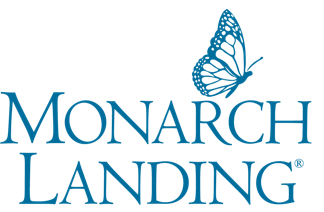Life Plan Communities: What Are the Pros & Cons?
January 16, 2024
These days, people are living longer. More significantly, they’re living well longer.
Older adults are more health-conscious than ever. As a result, they’re searching for ways to maintain their active lifestyles as they age. This focus on active aging and wellness drives the demand for Life Plan Communities.
What is the appeal of this retirement community choice? Life Plan Communities (also known as Continuing Care Retirement Communities or CCRCs) offer a unique option for seniors.
- First, they combine independent living with access to future care needs within the same community.
- Secondly, they offer a wide range of social, recreational, and fitness programs to support residents’ physical and mental well-being.
For seniors, they may present the best of both worlds: independence and security.
To get the most out of this retirement living choice, seniors should move sooner rather than later. Moving while you’re active and healthy allows you to take advantage of all the activities, programs, and amenities. But even more importantly, many contracts stipulate that you must be able to live independently to move into the community. Wait, and it may be too late to take advantage of this lifestyle.
But first things first. Like all major decisions, moving to a Life Plan Community requires a good deal of research before you take that step. Below are some Life Plan Community pros and cons to consider.
Pros
Peace of Mind
Life Plan Communities offer peace of mind you won’t find living at home. As a resident, you leave behind the worries and responsibilities of home maintenance and upkeep and any concerns about future healthcare needs.
Continuum of Care
The hallmark of a Life Plan Community is an on-site continuum of care, granting residents seamless access to the care options and support they may need as health needs change. Residents can easily transition to higher levels of care, such as memory care, skilled nursing care, or rehabilitation while remaining within the community and with people they know.
Maintenance-Free Residences
With a move to a Life Plan Community, you leave behind the hassles and headaches of home maintenance. Most communities take care of interior and exterior maintenance, housekeeping, lawn care, and other chores. With so much less to worry about, you’ve got free time to spend on the things you want to do.
Social Events
There is never a dull moment at a Life Plan Community. They offer a variety of activities, programs, and social events that bring people together, fostering relationships, friendships, and a sense of belonging.
More than fun, entertainment, or education, these programs are good for your health. Loneliness has been linked to serious health problems. What better way to stay healthy than being among friends?
Amenities
Designed to promote wellness and active aging, many Life Plan Communities offer amenities you’d find at a resort! Indoor pools, fitness centers, spas, woodworking shops, art studios, green spaces, and walking trails are among the most popular features. Some even have dog parks, inviting your pet to enjoy an active lifestyle, too.

Services
With a variety of services included in your monthly fee, life is easier at a Life Plan Community. Most communities offer transportation, 24-hour security, and concierge services, adding daily convenience.
Dining
Life Plan Communities are placing more of an emphasis than ever on dining services. Today, communities have executive chefs and culinary teams on-site, creating freshly prepared foods that are made-to-order. Residents enjoy the choices of dining venues and changing menus, elevating the dining experience to new heights.
Predictable Costs
Life Plan Communities require a one-time entrance fee and monthly fees based on your choice of residence and contract type. The monthly fees include a dining plan, home maintenance, access to community amenities, utilities, and more, providing financial security and predictability.
Cons
Upfront Costs
Life Plan Communities require entrance fees and monthly charges in order to provide ongoing services and care. The costs vary depending on the resident chosen, contract type, and other facts.
Contracts
The contracts offered with a Life Plan Community can be complicated. You must understand which contract type(s) are offered – Type A Life Care, Type B (modified Life Care), or Type C (fee-for-service) – which services and care levels are covered within each, and the cost associated with the contract.
At a Type C Fee-for-Service community like Monarch Landing, you only pay for care when and if you need it and at market rates. This type of community comes with the lowest upfront admission payment (or entrance fee) to ensure you have priority access to all levels of high-quality health care as needed.
Everyone’s health care journey is unique. At Monarch Landing, you don’t have to pay for health care services you may never need, but you are prepared for whatever comes.
Downsizing
While moving to a Life Plan Community most likely will involve downsizing your home, it also gives you the opportunity to create and decorate a brand-new space. After years of accumulating possessions, you have the opportunity to de-clutter, only keeping the treasures you love.
Other Considerations
Location
Be choosy about the location of your community. Make sure it’s close to friends and family or in a desirable area.
Financial Strength of Community
Do your due diligence. Evaluate the financial stability of the Life Plan Community you’re interested in. Make sure it has a solid track record of meeting financial obligations.
Begin Your Search at Monarch Landing
At Monarch Landing, our Life Plan Community checks all the right boxes for seniors. Call us today at 630-300-1300 to schedule a visit to our welcoming community.




